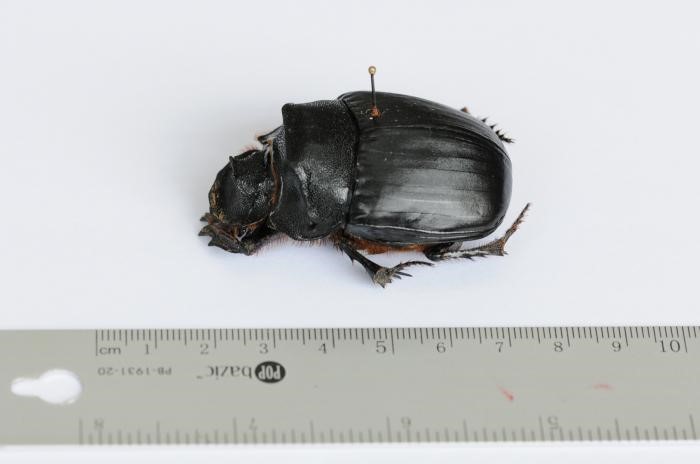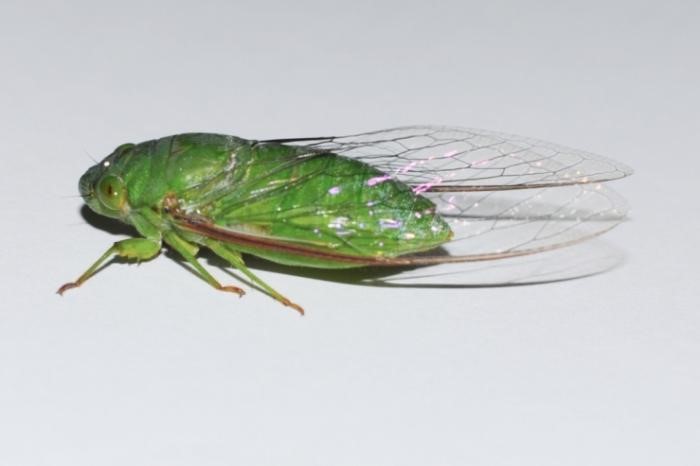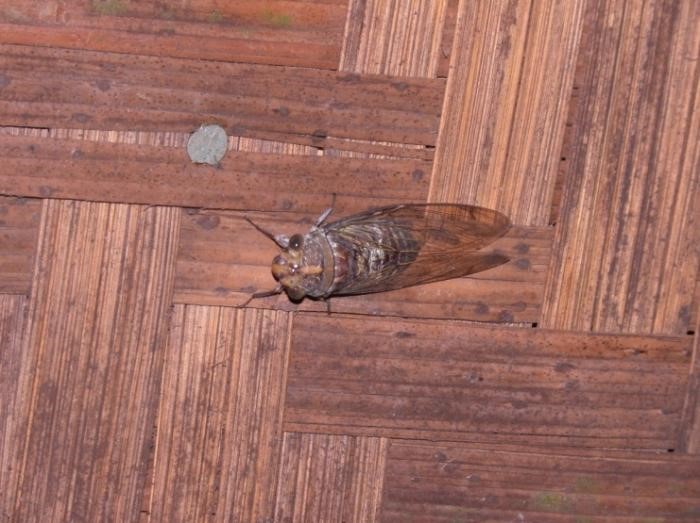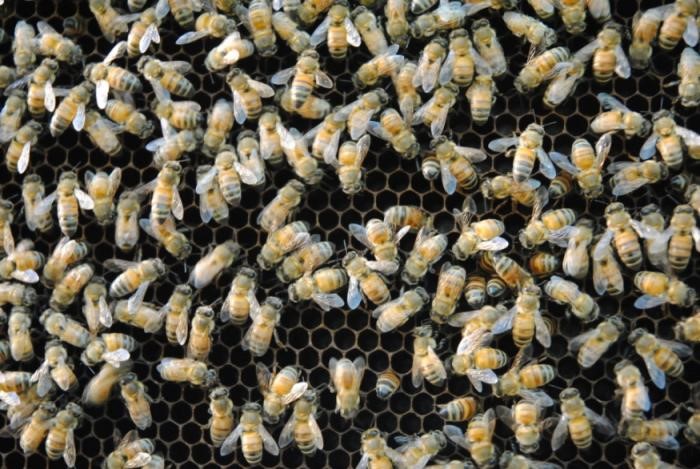Insects as medicine and healthcare
- Several works by research teams from Forestry Department of Sabah have shown that insects had been used for medication among several ethnics in Sabah [1]
- Below are descriptions of some insects species used as traditional medicine in Malaysia (Table 1)
| Vernacular Name | Scientific Name | Family | Descriptions |
| English: Dung Beetles Malay : Kumbang najis Kadazandusun:Kuzung/serung | Catharsius molossus | Scarabaeidae | Roasted, ground into powder form, mixed in warm water and given to children with asthmatic problems [2]. It can be used to remove splinters lodged into the skin by placing crushed beetle onto the injured skin for a few days to induce formation of pus to enable splinters to come out easily [2] |
| English: Weevils Malay: kumbang sukarno Kadazandusun: bubuk Lundayeh: buong darah | Palembus dermestoides | Dermestoidae | Roasted, ground into powder form, mixed in warm water and given to children with asthmatic problems [2]. It can be used to remove splinters lodged into the skin by placing crushed beetle onto the injured skin for a few days to induce formation of pus to enable splinters to come out easily [2] |
| English: Larvae of sago beetles Malay: Ulat sago Sungai: Tentaru | Rhynchophorus ferrugineus | Scarabaeidae | Grub is boiled and stir-fried – claimed to treat diarrhoea. Some populations in Sabah consume it raw to treat mild tuberculosis [2] |
| English: Cockroaches | Periplaneta Americana | Blattidae | Crushed, mixed with oil and applied in small quantity onto a child’s the tongue for fever [2] The body is boiled with shallots, crushed and filtered and mixed with Chinese herbs believed to treat dilatation of the stomach [2]. Cockroach cooked, grounded and mixed with boiled water and drank is believed to treat asthma [2] |
| English: Water strider kadazandusun: Tampukau-kau | Gerris sp. | Gerridae | Squashed on a spoon and mixed with warm water and drank to accelerate formation of blisters and hasten alleviation chickenpox [2]. Crushed and rubbed at the back of body to relieve back pain or onto forehead to relieve fever [2]. Child is bathed with water containing crushed bugs to counteract fear in children [2] |
| English: Cicada Malay:Riang-riang Sungai:Temengil | Pompunia merula | Cicadidae | The skin of pupae is shed and boiled with other herbs, while the died worms or caterpillars were used for fever and stomach ache [2] |
| English: Honeybee Malay: Lebah madu Sungai: Lebah | Apis dorsata Apis cerana | Apidae | Honey is drank with plain water or taken with raw egg yolk, lime or slices of onion and ginger to treat several illnesses including to clean ulcers, diarrhea, cough and throat maladies [2]. Honeybee venom helps to boost immune system [2]. Bee-wax is used as balm for lips [2]. Propolis contains antiseptic properties to suppress growth of bacteria, viruses, fungi and molds [2]. The mud nest is used to treat headache by placing the insect on the forehead and clean pus by putting them on swollen part [2] |
| English: Carpenter bee | Xylocopa spp. | Apidae | Carpenter bee is boiled with herbs and drank for sore throats [2] |
| English: Termites | Micotermes obes Macrotermes esherae Odontermes formosanus [3][4] | Isoptera | The termite queen is consumed raw as an aphrodisiac. It is also believed to control asthma and relieve joint pain [2]. South Indian tribe used termites to treat asthma [2] |
 |

|
 |
 |
the best known are honey and brood
References:
- Mashitah MY, Maryati M, Hainidah J. Preliminary study on ethnozoology of the Lower Kinabatangan Orang Sungai. In: Mohamed M, Takano A, Goossen B, Indran R, editors. Crocker range: Scientific Expedition 2002. Universiti Malaysia Sabah, Sabah: 2004; p. 143.
- Chung AYC, Khen CV, Unchi S, Tingek S, Won A. A survey on traditional uses of insects and insect products as medicine in Sabah. Malaysian Naturalist. 2001;55(1):24-29.
- Thapa RS. Termites of Sabah (East Sabah): Sabah Forest Record. Sabah: Sabah Forest Department; 1977.
- Tho YP. Termites of Peninsular Malaysia: Malayan Nature Record. Kuala Lumpur: Forest Research Institute Malaysia; 1992.


